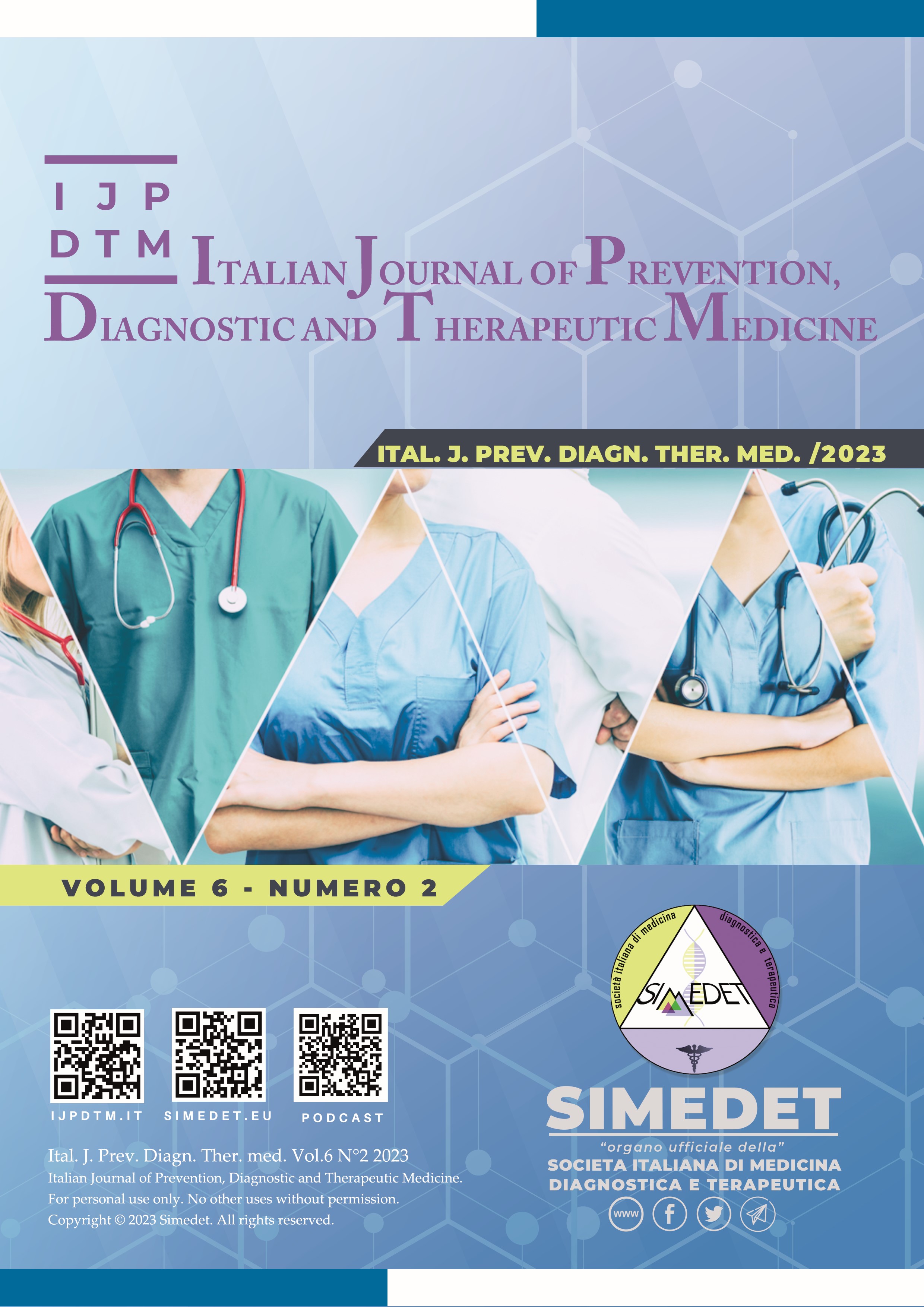The management of overcrowding in the emergency room analysis of the phenomenon and operational strategies
Main Article Content
Abstract
Overcrowding in emergency rooms and in health facilities in general, especially in the winter months, is a problem that does not only concern our national but also international sphere.
A fundamental role in the management of patients in the Emergency Department is played by the triage approach and the triage nurse.
Triage has the task of redistributing waiting times in favor of those who are in actual need of urgent assistance and not of reducing waiting times.
For this reason, in this review the importance of Triage was highlighted, as a moment of contact with the patients together with the role of the nurse for the evaluation of patients, taking into account the available resources, evaluates the clinical conditions, the degree of and the risk before giving the priority code that allows access to the medical examination.
In this study we will make an assessment of the various types of triage approach and some solutions that can allow the reduction of overcrowding will be examined.
Downloads
Article Details

This work is licensed under a Creative Commons Attribution-NonCommercial-NoDerivatives 4.0 International License.
References
Johnson KD, Winkelman C. The effect of emergency department crowding on patient outcomes: a literature review. Adv Emerg Nurs J. 2011 Jan-Mar;33(1):39-54.
Kenny JF, Chang BC, Hemmert KC. Factors Affecting Emergency Department Crowding. Emerg Med Clin North Am. 2020 Aug;38(3):573-587.
Monti M, L’Angiocola PD, Marchetti R, Paciullo F, Borgognoni F. Strategies for prevention of SARS-CoV-2 infection in a rural Emergency Department. Hong Kong Journal of Emergency Medicine. 2021;28(2):114-116.
Rabin E, Kocher K, et Al. Solutions to emergency department ‘boarding’ and crowding are underused and may need to be legislated. Health Aff (Millwood). 2012 Aug;31(8):1757-66.
Roscoe LA, Eisenberg EM, Forde C. The Role of Patients’ Stories in Emergency Medicine Triage. Health Commun. 2016 Sep;31(9):1155-64.
Nakao H, Ukai I, Kotani J. A review of the history of the origin of triage from a disaster medicine perspective. Acute Med Surg. 2017 Jul 14;4(4):379-384.
D.P.R. 128/1969.
Christian MD. Triage. Crit Care Clin. 2019 Oct;35(4):575-589.
MINISTERO DELLA SANITA, G.U. n. 114 Serie Generale del 17 maggio 1996 “Atto di intesa tra Stato e regioni di approvazione delle linee guida sul sistema di emergenza sanitaria in applicazione del decreto del Presidente della Repubblica 27 marzo 1992. Available at: :https://www.gazzettaufficiale.it/atto/serie_generale/caricaDettaglioAtto/originario?atto.dataPubblicazioneGazzetta=1996-05-17&atto.codiceRedazionale=096A2986.
Linee di indirizzo nazionali sul triage intraospedaliero. Ministero della Salute.
Direzione Generale della Programmazione Sanitaria. Available at:
http://www.salute.gov.it/imgs/C_17_notizie_3849_listaFile_itemName_1_file.pdf.
Abstracts. J Epidemiol Community Health. 2007 Sep;61(Suppl 1):A–A44. PMCID: PMC2659111.
Chrusciel J, Fontaine X, Devillard A, Cordonnier A, Kanagaratnam L, Laplanche D, Sanchez S. Impact of the implementation of a fast-track on emergency department length of stay and quality of care indicators in the Champagne-Ardenne region: a before-after study. BMJ Open. 2019 Jun 19;9(6):e026200.

